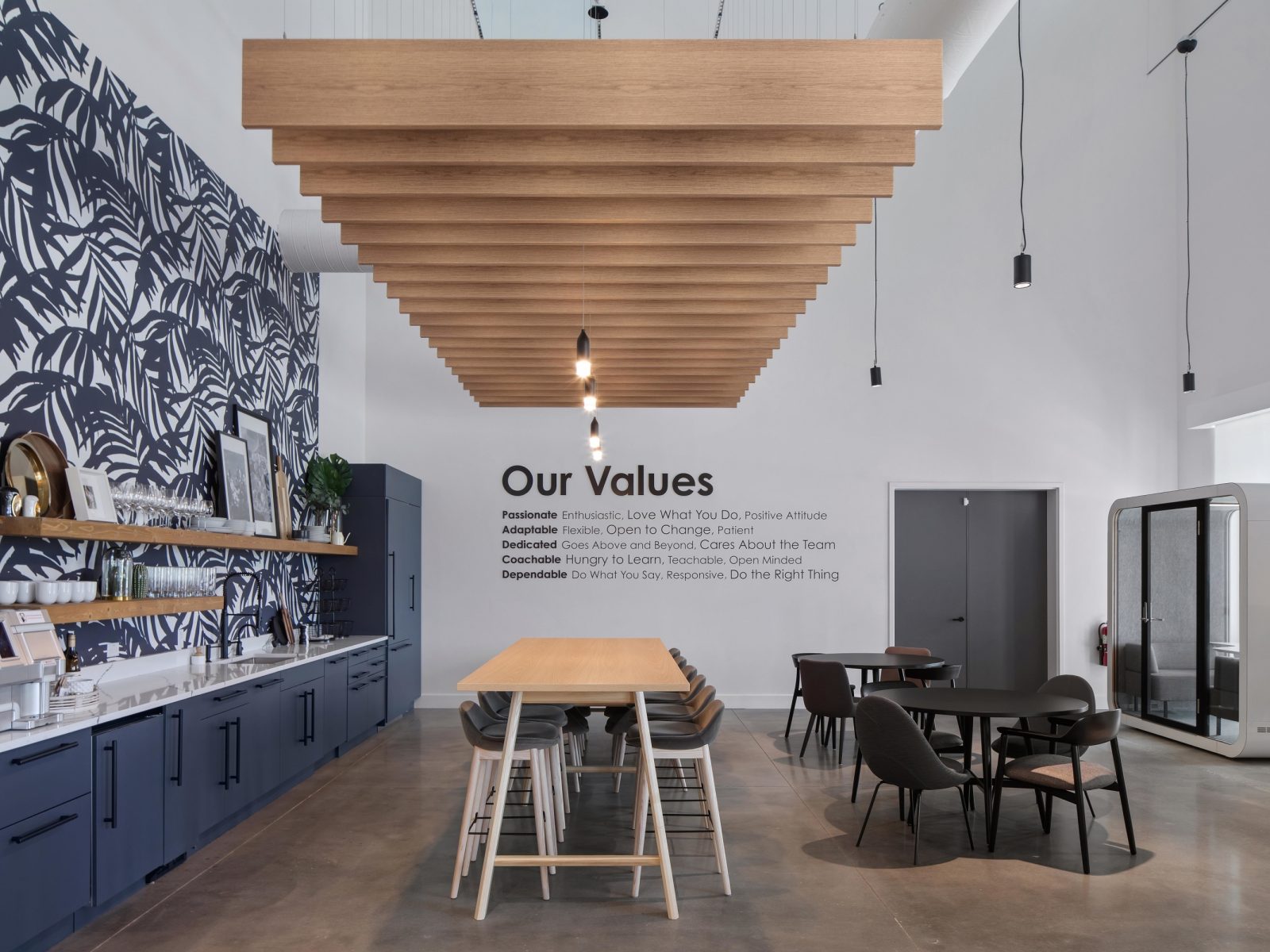Circular Design: Building a Sustainable Legacy for Future Generations
Our designs should aim to leave a positive legacy for generations to come, where every decision counts—be it material selection, renovating existing structures, or advocating sustainability with clients.

Designers are constantly in pursuit of the next remarkable innovation—a blend of beauty, timelessness, and innovation. We aim for spaces that command attention, showcasing recently developed, technically superior products that boast longevity, easy maintenance, and adaptability. Sustainability has become deeply ingrained in commercial architecture and design practices. Designers advocate for product manufacturers to incorporate recycled materials, reduce VOCs (volatile organic compounds), streamline manufacturing processes, and monitor embodied carbon. We conscientiously select these sustainable options, integrating them into our projects, reveling in the satisfaction of appreciative clients, and then swiftly transitioning to the next endeavor. Yet, a significant challenge remains: the eventual fate of most materials is to end up in a landfill during subsequent renovations. How can we circumvent this outcome?
In the early stages, efforts to reduce carbon emissions primarily concentrated on enhancing operational energy efficiency. However, as these approaches mature and broaden, there's a notable shift towards addressing embodied carbon. Embodied carbon, as defined by the Carbon Leadership Forum, refers to the greenhouse gas emissions generated throughout the lifecycle of building materials—from production and transportation to installation, maintenance, and disposal. Thus, by minimizing production and maximizing reuse, we can effectively curb embodied carbon. This concept is closely tied to the principles of a circular economy or circularity.
The fundamental pillars of a Circular Economy model entail:
- Minimizing waste and pollution
- Promoting the continuous circulation of products and materials at their highest utility
- Fostering the regeneration of natural resources
The United States embodies a consumer-centric culture, prioritizing convenience and efficiency. Frequently, opting to purchase something new is quicker and simpler than repairing or refurbishing existing items for continued use. The notion that one person's trash could be another's treasure often remains confined to individual transactions on platforms like Facebook Marketplace, Craigslist, or eBay. Nonetheless, this mindset is gradually evolving, and avenues for effectively integrating circular strategies are emerging within commercial workplace design.
Disassemble Instead of Destroy
The initial principle of circularity to adopt is reuse; the most environmentally friendly form of reuse involves repurposing existing resources.
Who wouldn't relish the chance to design within a completely blank canvas? Designers can customize expansive areas to suit the tenant's requirements, free from constraints hindering creative freedom. It's imperative to embrace challenges, appreciate intricacies, and view each obstacle as a chance for innovation. Not every wall needs to come down, and repurposing certain rooms can be a viable option. Elevate these repurposed spaces with fresh paint, flooring, and lighting fixtures.
The next phase in reusing materials involves keeping them on-site, eliminating the need for shipping. While walls might need to be removed, doors and frames can often be repurposed. Take a thorough look around to identify salvageable items for the project. If doors aren't suitable for your project, chances are someone else can make use of them. Are the existing light fixtures energy-efficient? Get creative in finding new homes for them. If there are millwork pieces in good condition, consider integrating them into the design—after all, there's always a need for additional storage. Although there may be initial design expenses, these can be balanced out by the savings from not having to purchase new materials.
Instead of opting for demolition, seek out a contractor who specializes in decommissioning and deconstruction. While this method of carefully dismantling building components for reuse may take more time and possibly incur higher costs than sending in a team with sledgehammers, it offers numerous benefits. By understanding and incorporating the time factor early in the project schedule, its impact on completion can be minimized.
Intentional Selection of Materials and Products
As you delve into the design process, ponder the significance of incorporating reused and refurbished materials, appreciating the unique character they can infuse into the project. There are ample opportunities to incorporate both standout pieces and standard materials.
Recall those walls and rooms left intact to save costs (and reduce carbon footprint)? Had they been movable, it would have facilitated their reuse, allowing them to be positioned where they best complement the design rather than necessitating design adjustments around them. Instead of relying on traditional drywall and studs with subsequent finishes, explore modular construction alternatives like DIRTT. Modular construction systems are prefabricated offsite and assembled onsite, resulting in reduced construction waste, potentially shorter construction timelines, and endless future possibilities that don't involve contributing to landfills.
Of course, not all materials can be repurposed. When specifying new materials, factor in their total embodied carbon—not just their initial manufacturing process but their entire lifecycle. Match a material's durability with its projected lifespan of use. Anticipate future renovations by incorporating options that can be easily separated for reuse or recycling, especially in areas with quicker turnover cycles. Opt for more durable items for building elements less likely to undergo changes. While a comprehensive review of sustainable material selection considerations is beyond the scope here, numerous valuable resources are available.
Closing the Circle
Completing the circle requires collective effort. While there's no shortcut, the solutions exist. Designers need to seize the opportunities and convey this optimistic outlook to clients.
Our designs should aim to leave a positive legacy for generations to come, where every decision counts—be it material selection, renovating existing structures, or advocating sustainability with clients.
"Circularity" isn't merely a buzzword; it signifies a shift in mindset. Architects and interior designers should collaborate with clients to create environmentally sustainable and socially responsible spaces. By integrating circular strategies, we can pave the way for a more sustainable and resilient future.













